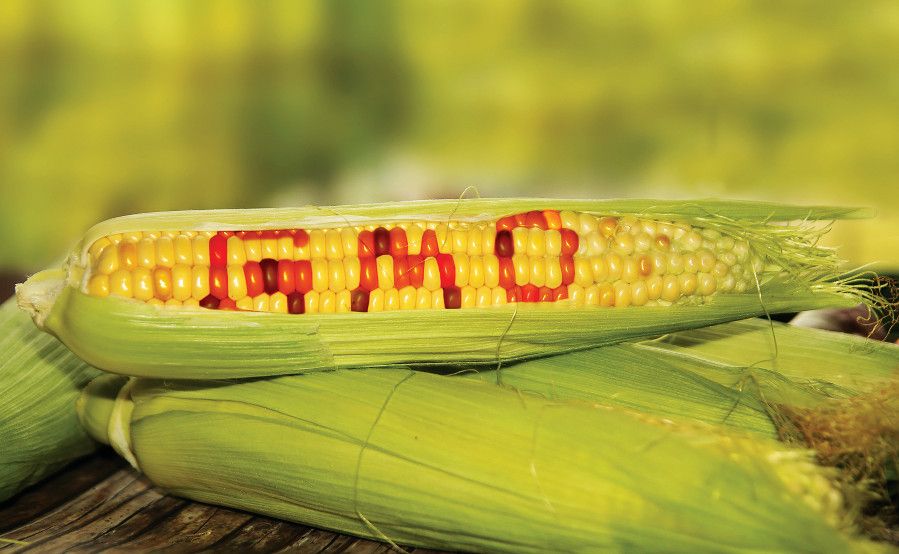FDA Issues GMO Labeling Final Guidance for Foods Derived from Plants
In addition, the agency has approved as safe for food the first genetically modified (GM) animal intended for food.
Photo © iStockphoto.com/nevarpp

FDA made several critical announcements today regarding genetically modified organisms (GMOs). The agency released final guidance on voluntary GMO labeling for foods derived from genetically modified (GM) plants. In addition, the agency has approved as safe for food the first GM animal intended for food. The AquAdvantage Salmon is said to reach market size more quickly than non-GM salmon and will be raised in Canada and Panama in what FDA calls "controlled" environments.
GMO Labeling: Foods from Plants
FDA’s final guidance describes GM labeling as voluntary. Companies can label their products for either the absence or the inclusion of GM ingredients. Under current Federal Food, Drug, and Cosmetic Act rules, FDA can only require labeling of GM content if there is a material difference between the GM food and its non-GM counterpart-differences such as nutritional value.
“Food manufacturers may voluntarily label their foods with information about whether the foods were not produced using bioengineering, as long as such information is truthful and not misleading,” the guidance states, providing examples of statements that could be used:
- “Not bioengineered.”
- “Not genetically engineered.”
- “Not genetically modified through the use of modern biotechnology.”
- “We do not use ingredients that were produced using modern biotechnology.”
- “This oil is made from soybeans that were not genetically engineered.”
- “Our corn growers do not plant bioengineered seeds.”
Don’t Say “Not Genetically Modified”
The guidance notes that some consider genetic modification as even minor changes to gene composition, such as changes achieved through historically accepted traditional methods like hybridization and breeding. As such, the agency says that instead of stating that an ingredient is “not genetically modified,” companies should instead use wording such as “not genetically engineered” or “not genetically modified through the use of modern biotechnology [emphasis added].”
Don’t Say “GMO Free”
FDA also discourages wording affirming a complete absence of GMOs, including “GMO free,” “non-GMO,” or “does not contain GMOs.” The agency reasons that it is difficult to substantiate a complete “free from” claim guaranteeing total absence.
The guidance also suggests that manufacturers make their disclosures more specific, such as “our tomato growers do not plant bioengineered seeds” or “this oil is made from soybeans that were not genetically engineered.”
Context
It could also be considered misleading if companies stay silent on ingredients that may contain GMOs but only choose to call out ingredients that are not genetically modified. Such a statement could be considered truthful but still misleading, the guidance states, by leading consumers to believe that the product as a whole contains no genetically engineered content.
Also, manufacturers should ensure that their labels-both graphics and wording-do not imply that a product is inherently safer than genetically modified counterparts.
For food products comprising multiple ingredients, the guidance says that GMO-related statements should be made to address ingredients “and not the food as a whole; for example, ‘This product contains laurate canola from bioengineered canola that may be used as an alternative to palm kernel oil.’” And, it says, if non-GM ingredients are called out as an alternative to a GM ingredient, there should be a sufficient amount of the non-GM ingredient present in the product to make a difference.
Differences in Nutritional Content
Finally, the guidance states, labels should disclose the fact that a food is produced from genetically engineered plants to create significantly different nutritional properties, such as boosting the amount of a specific vitamin or mineral in an ingredient.
Claims Substantiation
In order for claims to be truthful and not misleading, companies should possess substantiation for their GMO or non-GMO claims, the guidance says. Substantiation can take the form of records from farmers, distributors, or manufacturers, or USDA Organic certification. Additionally, it says, companies must use validated analytical methods to confirm the absence or presence of GM material.
FDA guidance reflects the agency’s current thinking and is not mandatory by law unless so stated. Nutritional Outlook will continue reporting on this story, including implications for the voluntary GMO-labeling bill, the Safe and Accurate Food Labeling Act, which is currently awaiting a Senate vote.
Also read:
Do We Need GMO Labeling if We Already Have the NOP Organic Seal?
Non-GMO Riding on Organic’s Coattails?
Is Non-GMO Certification Necessary for All Ingredients?
Jennifer Grebow
Editor-in-Chief
Nutritional Outlook magazine
jennifer.grebow@ubm.com
HHS announces restructuring plans to consolidate divisions and downsize workforce
Published: March 27th 2025 | Updated: March 27th 2025According to the announcement, the restructuring will save taxpayers $1.8 billion per year by reducing the workforce by 10,000 full-time employees and consolidating the department’s 28 divisions into 15 new divisions.







